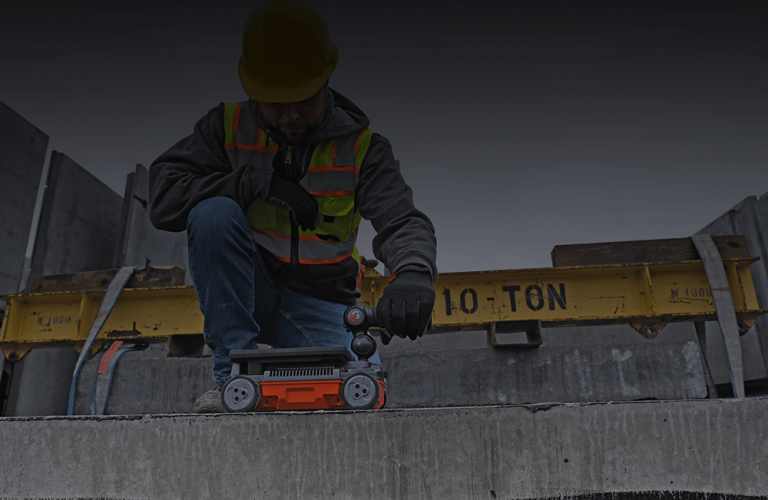RainierGPR Concrete Scanning: Advanced Solutions for Safe Building And Construction
RainierGPR Concrete Scanning: Advanced Solutions for Safe Building And Construction
Blog Article
Exploring the Key Benefits of Concrete Scanning in Building And Construction Projects
In the world of modern-day construction practices, the application of concrete scanning modern technology has become a pivotal tool for making sure job efficiency and architectural honesty. From improving precaution to accurately detecting energies concealed below the surface, the advantages of concrete scanning are diverse. The ability to improve task timelines and decrease costs while maintaining existing frameworks is a testament to the worth this technology gives the construction sector. As we delve into the nuanced advantages of concrete scanning, it ends up being noticeable that its impact prolongs much beyond surface-level assessments, providing a glance into the intricate web of advantages waiting to be uncovered.
Improved Precaution
Making use of advanced concrete scanning technology boosts safety and security actions on construction sites by providing accurate detection of prospective hazards hidden below the surface. This modern technology enables construction groups to determine rebar, channels, post-tension wires, and various other blockages before excavation or drilling, dramatically reducing the risk of accidents. By identifying these aspects exactly, workers can prevent harmful crucial structural components, thus protecting against injuries, delays, and costly repair work.
In addition, concrete scanning plays an essential duty in making sure the stability of existing structures during renovations or growths. By detecting weak points, spaces, or deterioration within concrete aspects, engineers can address these problems proactively, boosting the general security and longevity of the building. This proactive strategy not just mitigates the danger of structural failures yet likewise minimizes the capacity for mishaps caused by unpredicted architectural deficiencies.
Basically, the application of concrete scanning technology serves as an aggressive precaution that safeguards both building and construction workers and the architectural stability of buildings, inevitably contributing to the general success and performance of building and construction jobs. - RainierGPR Concrete Scanning
Accurate Detection of Utilities
Concrete scanning modern technology assists in exact recognition of underground utilities, boosting building and construction site safety and security and performance. Exact detection of utilities is important in construction projects to avoid costly damages, project hold-ups, and most significantly, guarantee the security of employees and the general public. By making use of advanced scanning technologies such as ground-penetrating radar (GPR) and electro-magnetic induction, building and construction teams can map out the area of buried pipelines, wires, and other utilities with high levels of accuracy.

Time and Cost Effectiveness

Concrete scanning technology makes it possible for construction groups to accurately find rebar, post-tension wires, and other ingrained things within concrete structures. This precise info aids in avoiding expensive blunders such as unintended damage to vital elements during drilling, cutting, or coring tasks. In addition, by identifying possible hazards in advance, the demand for expensive repairs or remodel as a result of damages can be lessened, resulting in set you back financial savings for the job.

Moreover, the capability to promptly and accurately find energies beneath the surface without creating any damage not just conserves time but likewise protects against costly disruptions to existing facilities. Overall, the moment and price performance benefits of concrete scanning make it a vital device for boosting building project management and execution.
Preservation of Architectural Integrity
Protecting the structural integrity of buildings and facilities is critical in ensuring long-term security and safety and security. Concrete scanning plays a vital role in this conservation procedure by enabling building experts to determine prospective risks to the architectural integrity of a structure or facilities before they rise right into significant problems. Through using innovative scanning technologies such as ground-penetrating radar (GPR) and electromagnetic induction, construction groups can non-invasively examine the condition of concrete structures, find rebar, post-tension cable televisions, and various other ingrained website here elements, and recognize any kind of voids, cracks, or damage within the concrete.
Improved Task Planning
In order to make certain the effective implementation of construction tasks, thorough interest to detail and detailed planning are essential components that come from a thorough understanding of the architectural problems determined with concrete scanning. Boosted task planning, facilitated by concrete scanning, allows construction teams to preemptively resolve possible obstacles, allocate resources a lot more successfully, and establish realistic timelines. By accurately recognizing the location of rebar, post-tension wires, and various other ingrained items within concrete frameworks, job supervisors can create a lot more specific construction plans that reduce the risk of costly errors or hold-ups. Additionally, the data obtained from concrete scanning enables stakeholders to make informed decisions relating to structural alterations, renovations, or expansions, leading to smoother project changes and enhanced overall job outcomes. Eventually, integrating concrete scanning right into the project planning stage improves sychronisation amongst employee, fosters positive analytical, and adds to the effective distribution of building and construction jobs within spending plan and timetable restrictions.
Final Thought
In conclusion, concrete scanning uses numerous advantages in building and construction tasks. By improving safety procedures, accurately identifying utilities, improving time and expense performance, maintaining structural honesty, and aiding in job preparation, concrete scanning verifies find out to be an essential device for effective project implementation. Its capability to alleviate risks, increase performance, and guarantee job honesty makes it a vital asset for construction specialists.
In the world of modern building techniques, the usage of concrete scanning innovation has actually arised as an essential tool for making certain job efficiency and architectural integrity.Concrete scanning innovation allows construction teams to precisely situate rebar, post-tension cable televisions, and various other ingrained things within concrete frameworks. With the usage of innovative scanning innovations such as ground-penetrating radar (GPR) and electromagnetic induction, construction groups can non-invasively evaluate the condition of concrete structures, situate rebar, post-tension cable televisions, and other embedded components, and identify any kind of spaces, splits, or wear and tear within the concrete.
In order to make sure the successful execution of building jobs, thorough attention to information and extensive preparation are crucial components that stem from a comprehensive understanding of the structural conditions determined with concrete scanning. Inevitably, incorporating concrete scanning into the job preparation stage enhances sychronisation amongst group members, cultivates aggressive problem-solving, and contributes to the effective shipment of building jobs within budget plan and routine restrictions.
Report this page